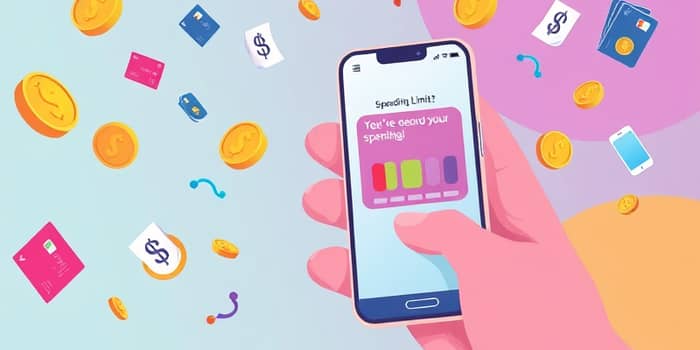
Managing expenses can feel overwhelming. However, by harnessing digital tools you can stay informed and in control of your finances. Setting up alerts for spending thresholds is a simple yet powerful way to prevent overspending and foster healthy budgeting habits.
In this article, we will explore the purpose of spending threshold notifications, explain their benefits, guide you through setup processes, and share advanced tips and real-world examples. By the end, you will have the knowledge to track your expenses effectively and avoid surprises on your next bank statement.
Spending threshold notifications are automated alerts delivered when your financial activity nears or exceeds predefined limits. These limits can be tied to account balances, individual transactions, or spending categories. They serve as early warning signals, empowering you to adjust your behavior before budgets are broken or fees are incurred.
Typically, these notifications are available through:
Embracing spending threshold notifications offers multiple advantages:
When you receive an alert just as you hit your grocery budget for the month, you can choose to cook at home instead of grabbing an expensive meal out. This level of awareness directly supports personalized budgeting and expense control and helps you adapt spending habits on the fly.
Most financial institutions and budgeting apps provide user-friendly interfaces for configuring alerts. While the exact steps vary by platform, the general process remains consistent. Follow these guidelines to get started:
Setting up multiple alerts for different triggers is often beneficial. For example, a low balance alert can prevent overdraft fees, whereas a category alert on dining out can help manage discretionary spending.
To ensure alerts remain meaningful rather than overwhelming, customization is key. Start by evaluating your monthly income, fixed expenses, and discretionary categories. Assign thresholds that align with realistic spending goals and adjust periodically as circumstances evolve.
Consider grouping similar expenses under one category for streamlined monitoring of related purchases. Set higher thresholds for occasional splurges and lower ones for routine costs. Enable detailed transaction alerts only for large or unusual charges to prevent distracting notification fatigue.
Review your thresholds every few months, especially after significant life changes like a new job, moving, or updated monthly commitments. Dynamically adapting these limits maximizes their impact and keeps your budget realistic.
Beyond basic alerts, advanced integrations can elevate your financial management. Third-party budgeting platforms often sync with multiple bank accounts, credit cards, and even investment accounts. They can provide consolidated dashboards and analytical reports.
Some advanced features include daily or weekly email summaries and integration with calendar apps to schedule reminders for upcoming bills and recurring payments. You might also combine these alerts with financial goal tracking—such as saving for a vacation or paying down debt—to trigger motivational messages when you stay under budget.
Automated daily spending summaries delivered to your inbox help you spot trends over time. By connecting these tools, you gain a holistic view of your finances and can leverage data-driven insights to make informed decisions.
Consider these scenarios where spending threshold notifications made a tangible difference:
These examples illustrate how tailored thresholds can support diverse financial goals, from everyday household budgets to professional and academic needs. Leveraging multiple alert types across different accounts delivers comprehensive coverage and ensures you stay ahead of your financial curve.
Setting up notifications for spending thresholds is a straightforward yet highly effective method to manage your money. By defining personalized triggers, choosing suitable delivery channels, and integrating with broader budgeting tools, you build a resilient financial system that guards against overspending and promotes long-term discipline.
Embrace these alerts as allies in your financial journey. Keep refining your thresholds, experiment with advanced features, and watch how this simple practice transforms your relationship with money, giving you both peace of mind and greater control over your future.
References













